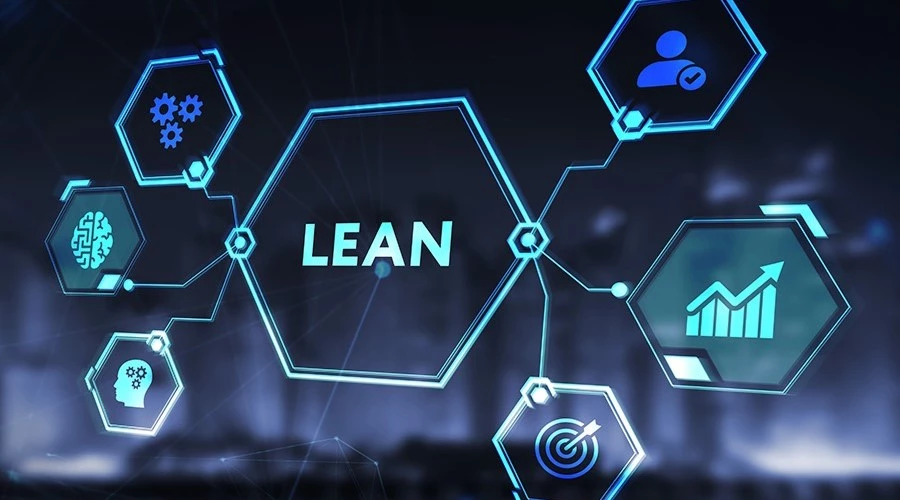
As one of the nation’s largest and most efficient retailers,
Walmart is no stranger to the advantage of continuous improvement frameworks
such as Kaizen and Six Sigma in everything it does. The focus of this blog is
to show how Walmart uses these tools to benefit warehouse operations and how it
affects the number of errors encountered by employees and the overall user
experience.
Six Sigma: A Data-Driven Approach to Error Reduction
Six Sigma, a data-driven methodology focused on minimizing
defects and process variations, complements Kaizen perfectly. Here's how
Walmart utilizes Six Sigma in their warehouses:
·
DMAIC cycle: The
Define-Measure-Analyse-Improve-Control (DMAIC) cycle forms the core of the Six
Sigma process. They define warehouse processes, measure performance, find root
causes of errors, implement and optimize data-driven solutions, and
continuously monitor compliance.
·
Statistical analysis: Statistical tools
are used to identify trends, mark areas of significant change, and measure the
effectiveness of implemented changes.
·
Error reduction: Six Sigma focuses on
reducing errors, which directly means reducing selection and warehousing
errors. Research has shown that implementation of Six Sigma can reduce errors
by up to 99.99966%.
By combining Kaizen's employee-centric approach with Six
Sigma's data-driven rigor, Walmart creates a powerful framework for continuous
improvement. This two-pronged strategy tackles inefficiencies from each a
cultural and a system perspective, leading to widespread reductions in
warehouse errors.
The Kaizen Advantage: A Culture of Constant Improvement
Kaizen, a Japanese philosophy meaning "continuous
improvement," is embedded within Walmart's operational DNA. Here's how
they leverage Kaizen principles in their warehouses:
·
Employee Empowerment: The staff is given the
power to point out inefficient systems and suggest innovations. It instils a
sense of belonging and drives a culture of creativity.
·
Standardized Processes: the picking, packing,
and inventory processes are always mastered in the same format to maintain
uniformity and avoid errors as much as possible.
·
Data-Driven Decisions: the warehouse data is
analysed with a fine comb to identify areas in high error rates and thus the
greatest room for improvement.
·
Visual Management: well-written signs,
color-coded guides, and distinct storage areas are among the tools that ensure
little confusion and excellent picking with reduced errors.
·
Regular Improvement Cycles: feedback mechanisms
are set in place to monitor how well implemented changes are and how much more
there is to improve.
The impact of Kaizen is undeniable. Walmart has reported
significant. Reductions in picking errors, improved inventory management, and
increased overall warehouse productivity. Studies suggest that Kaizen
implementation can lead to a 10-30% reduction in warehouse errors and around
15-25% increase in productivity. These gains simply mean cost savings and
enhanced customer satisfaction.
Beyond Warehouses: The Ripple Effect of Continuous
Improvement
While the focus of this blog has been on warehouse
operations, the effect of Kaizen and Six Sigma extends some distance beyond.
Walmart contains those philosophies across its whole organisation, from
advertising campaigns to supply chain control.
A 2019 report by McKinsey & Company found that companies
that keep getting better at what they do see an average of 10-30% more money in
their pockets. Let’s talk about how Walmart created a great work environment
and what we can learn from it.
Walmart’s story is super interesting and can teach us a lot
about how to run a business, no matter how big or small. By adopting continuous
improvement methods like Kaizen and Six Sigma, companies can create a culture
of innovation, empower their employees, and reach operational excellence. By
using data to make decisions and always striving to get better, businesses can
handle tough situations, work more efficiently, and ultimately reach their
goals.
To be successful, you got to start with a solid foundation. Even
though Kaizen and Six Sigma are super powerful, they only work if the place
where they’re used is well-designed. If warehouses are not set up well and can’t
change with the times, it can mess up even the best plans to make things
better.
Partnering for Continuous Improvement:
This is where companies like BuildMyInfra comes in. We have
been doing this for a while and we know how to make warehouses that helps you
in increasing your efficiency and performance. Here is how they can help you
reach operational excellence:
·
Warehouses Made for Speed: Build My Infra
focuses on easy-to-follow layouts, specific areas for different tasks, and
smart storage options, which helps reduce mistakes and makes work faster.
·
Being Ready for Anything: Recognizing
that warehouse requirements can change, their designs are flexible enough to
handle future adjustments in how things are done, new technology, or different
products.
·
From the Beginning: We make sure our
warehouse is set up to collect and analyse data, which helps us make smart
decisions and keep improving. We work together to create a design that meets
your needs and gets everyone on board for making things better.
When companies team up with BuildMyInfra, they can make sure
their warehouses run smoothly now and can keep getting better in the long run.
Embrace the journey: continuous improvement is a
long-term process, not a quick fix. When companies focus on keeping their
employees happy, analysing data, and fostering a culture of innovation, they
can build a warehouse that keeps up with the fast-paced retail world, if you
have the right strategy and a reliable partner like BuildMyInfra, companies can
make their warehouses work better, faster, and happier for their customers.
The journey to being the best starts today – are you ready
to keep getting better?
POSTED BY
Dikshita Jain
International Master In Business